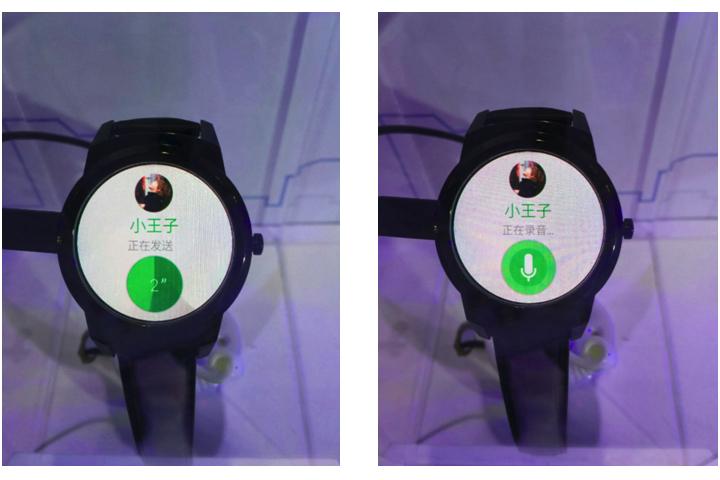
Updated on 05-06-2015 by Andy Boxall: Added in pictures of TOS+ running on a smartwatch, along with a few more feature details.
Tencent has based TOS and TOS+ on Android, and developers are free to use the platform provided a revenue share agreement is reached. TOS+ is destined to be used on the hardware, which is only just starting to capture people’s attention, from smartwatches to VR headsets. These, along with smart televisions, are all ideal platforms for pushing Tencent’s huge catalog of gaming apps, along with its social and entertainment services. The company also has a mobile payments system, which could operate on a TOS+ smartwatch via a TOS smartphone.
Images showing TOS+ running on a circular-faced smartwatch have shown up in China, revealing a very familiar looking user interface. Tencent’s software is built on Android, and from the pictures, the Android Wear design remains in the wearable version. Features including WeChat messaging, call management, alarms, music control, email, and fitness tracking are all displayed, suggesting these will be standard features on TOS+ hardware.
In an article accompanying the images, we’re told the aforementioned mobile payments feature may be joined by the ability to book taxis, and to make reservations at restaurants, plus TOS+ will likely come with voice recognition.
Only software from Tencent, hardware will be left to the experts
According to this local report on TOS+’s launch, Huawei, ZTE, Lenovo, and Qualcomm are all interested in utilizing the operating system in the future. Tencent’s CEO Ren Yu Xin said the company wouldn’t be launching any hardware of its own, meaning it doesn’t intend to use TOS in the same way Amazon uses its version of Android.
Android has a 72-percent market share in China, according to Kantar WorldPanel research, but it’s dominated by forked versions such as Xiaomi’s MIUI, which don’t come with Google’s apps installed. Tencent’s not the only one trying to muscle its way into the space, with search company Baidu and online shopping giant Alibaba both working on their own mobile operating systems.
However, Tencent’s mission is not an easy one. Samsung hasn’t managed to succeed with Tizen, and Microsoft hasn’t won many hearts with Windows Phone, proving if you’re not Google or Apple, it’s hard to get much attention. Except with 1 billion people using QQ and WeChat combined already, Tencent must be fairly confident of at least a degree of interest. There has been no announcement regarding when TOS+ will make its debut on any hardware.




